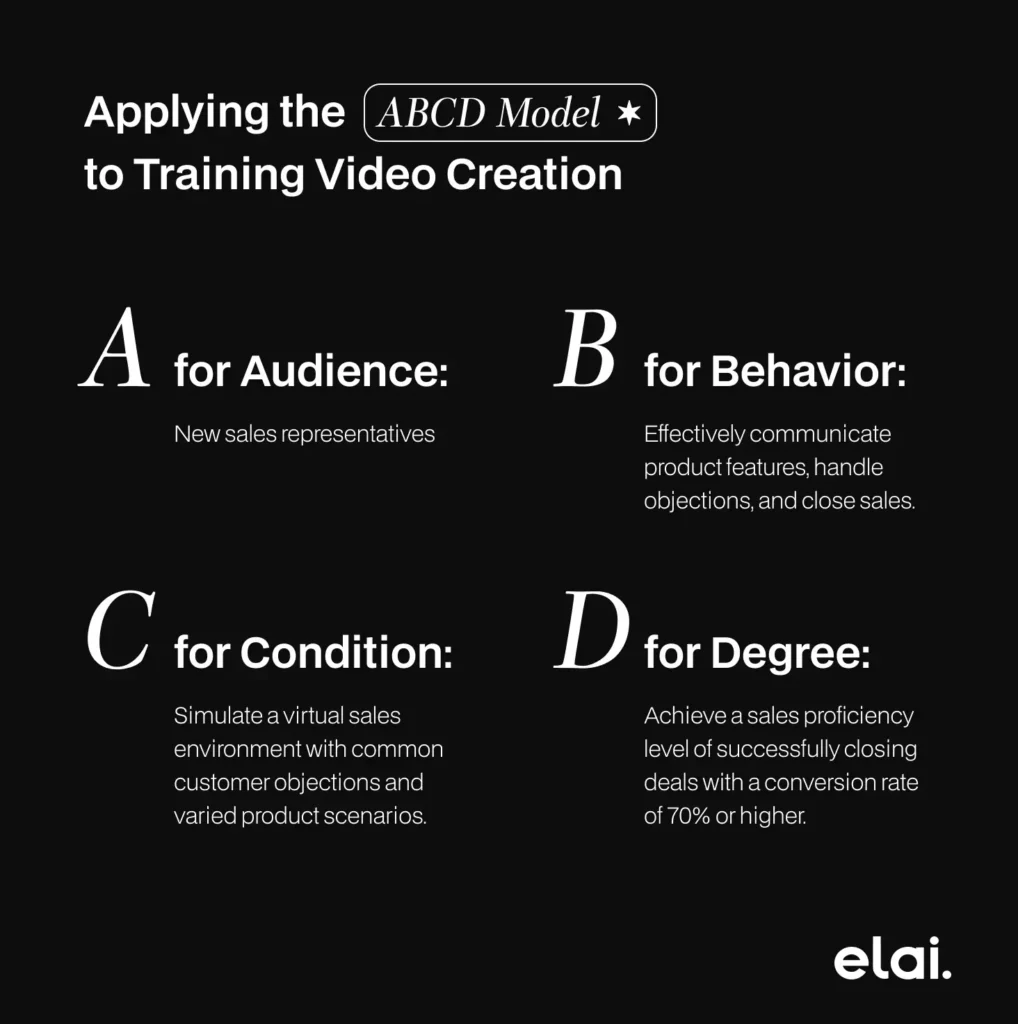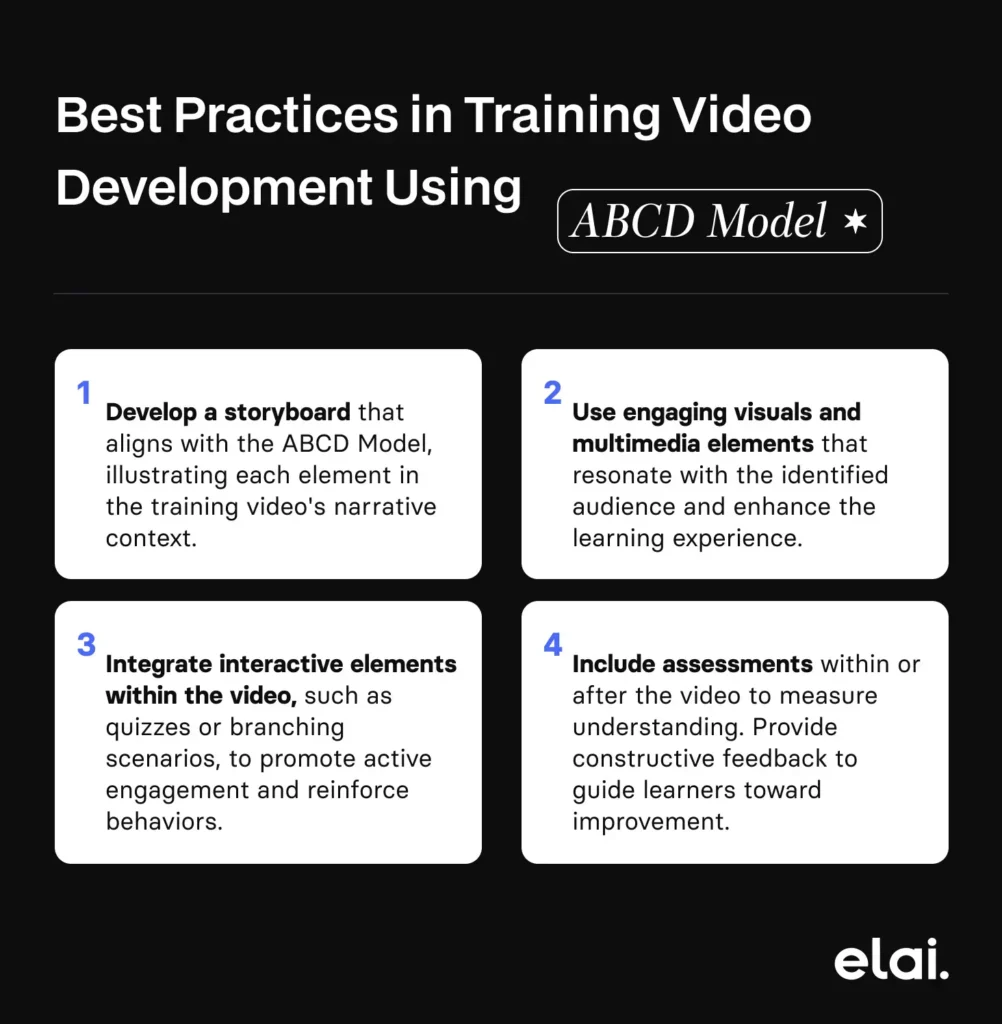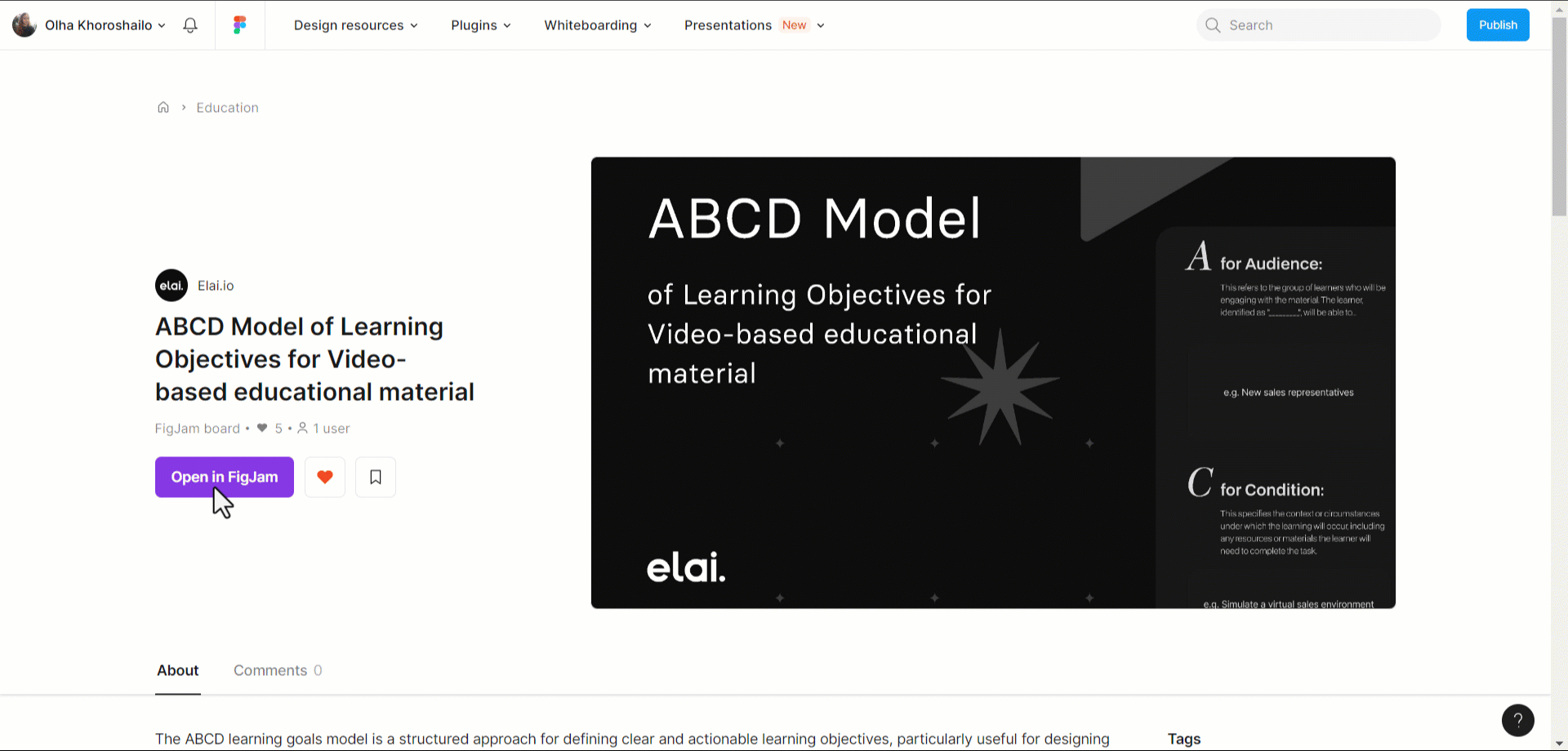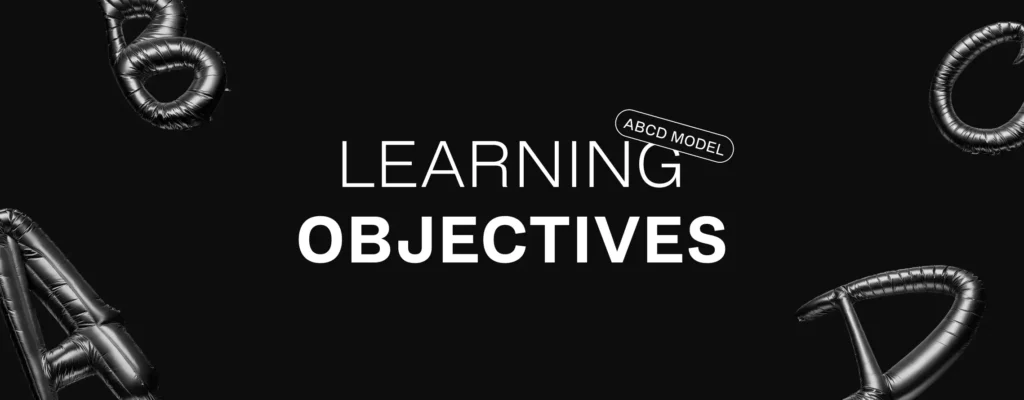Clear, quantifiable learning objectives are vital for training videos and in general. These goals give learners a road map for what they should accomplish throughout the program. Having well-defined goals for training videos, in particular, guarantees targeted and pertinent content creation, which raises motivation and engagement. They make meaningful assessment and evaluation possible, allowing teachers to gauge whether students have achieved the desired outcomes. All things considered, establishing specific learning objectives is essential to creating a focused, efficient, and memorable learning process.
Here is an example of a poorly written learning objective: “The employee should understand the software.” This learning objective is vague and lacks specificity. It doesn’t clearly define what learners are expected to do or demonstrate to indicate understanding. The term “understand” is subjective and can be interpreted in various ways, leading to ambiguity in assessment. A well-written objective should clarify the desired behavior or outcome, specifying observable actions that can be measured to determine the level of understanding. For example, a more effective learning objective might be, “The employee should successfully navigate the software interface, demonstrate key features, and troubleshoot common issues within a given time frame,” providing a clearer and measurable target for learners.
In this article, we’ll cover the ABCD model and how to apply it to training video creation, as it stands out as a guiding framework for creating impactful training videos. Let’s delve into practical examples of how each element of the ABCD Model can be effectively applied in training video development. The use case for this Learning Objective will be Sales Training Video for New Representatives.
1. A for Audience: New sales representatives
2. B for Behavior: Effectively communicate product features, handle objections, and close sales.
3. C for Condition: Simulate a virtual sales environment with common customer objections and varied product scenarios.
4. D for Degree: Achieve a sales proficiency level of successfully closing deals with a conversion rate of 70% or higher.

Thus, after watching the sales training video intended for new representatives, participants should be able to demonstrate skillful handling of objections, effective communication of product features, and successful closing of sales transactions. This is the overall expected Learning Objective for the training video. This will be accomplished by having them participate in a simulated virtual sales environment to deal with various product situations and typical client objections. To demonstrate mastery in implementing the learned skills, participants must achieve a sales conversion rate of 70% or greater, as stated in the learning goal, which also outlines the level of competency expected.
After seeing the specially designed training film for new sales reps, participants will be able to communicate product benefits, handle objections, and close sales with ease. The acquisition of this ability will involve participating actively in a virtual sales environment that is recreated, imitating typical client objections, and presenting a range of product situations. The participants must have a sales conversion rate of 70% or above to demonstrate that they have mastered the crucial abilities needed to close transactions.
One more example to demonstrate a proper-built Learning Objective for a training video on leadership skills may be set as, “Given a team collaboration scenario (Audience), managers will demonstrate effective leadership communication (Behavior) during a group meeting (Condition), achieving a consensus rate of 80% or higher (Degree).” This ensures the video aligns with the model, promoting targeted and measurable learning outcomes.

Best Practices in Training Video Development Using ABCD:
- Develop a storyboard that aligns with the ABCD Model, illustrating each element in the training video’s narrative context.
- Use engaging visuals and multimedia elements that resonate with the identified audience and enhance the learning experience.
- Integrate interactive elements within the video, such as quizzes or branching scenarios, to promote active engagement and reinforce behaviors.
- Include assessments within or after the video to measure understanding. Provide constructive feedback to guide learners toward improvement.
ABCD Model Template

To sum up, the ABCD Model of Objectives offers a useful and effective framework for creating instructional movies that promote desired actions and results. These illustrations clarify that companies may produce relevant, focused, and useful learning experiences for their varied audiences by coordinating training video material with the ABCD Model.
